The newly-built Buddhist temple at Ilankaithurai – re-named Lanka Patuna by the government. A bridge is being constructed to improve access to the site for the increasing number of Sinhala visitors.
Tamil Guardian co-editor and PEARL Advocacy Director Mario Arulthas travelled to Trincomalee last month to report on how Tamils in the region are struggling with the Sri Lankan state’s spread of Buddhism across the North-East.
Ilankaithurai Mugaththuvaram is a small Tamil village south of Trincomalee town, where the Ullakalle Lagoon meets the Bay of Bengal via a narrow strait. Prior to September 2006, the region was under the control of the LTTE, before a Sri Lankan military offensive on nearby Sampur caused civilians to be displaced south to Batticaloa. Almost 10 years later, the village has been renamed by the Sri Lankan government to “Lanka Patuna”, and has dozens of Sinhala visitors arriving every day to look at the newly constructed Buddhist temples.
Whilst the southern tourists visit Buddhist temples, displaced Tamils who were resettled in the Verugal-Eachilampattu divisional secretariat by September 2008, returned to find several of their Hindu temples destroyed. A temple – Koyil in Tamil – devoted to the Hindu deity Murugan, situated on a cliff overlooking the strait between the lagoon and the Indian Ocean, had been replaced by a Buddhist temple. According to Sinhala folklore, the place is sacred, marking the exact spot where Indian royalty carrying the tooth of the Buddha, landed in the 4th century AD.
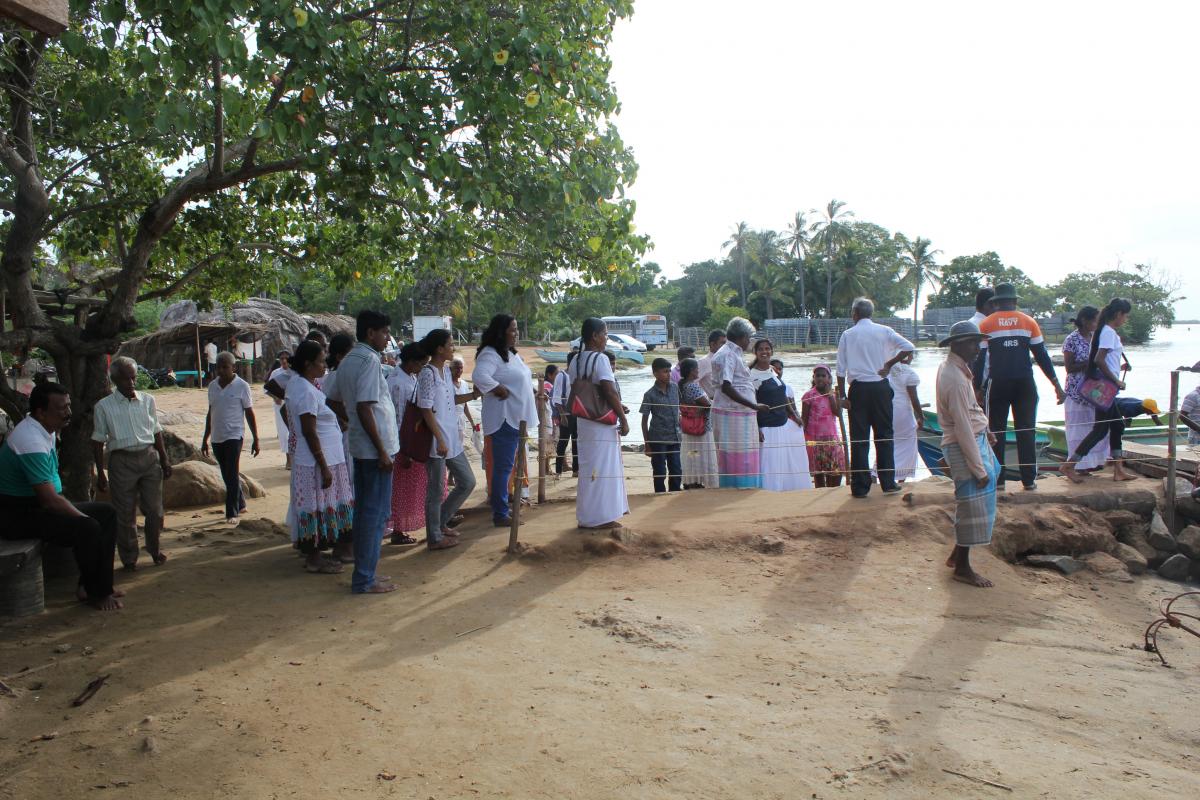 |
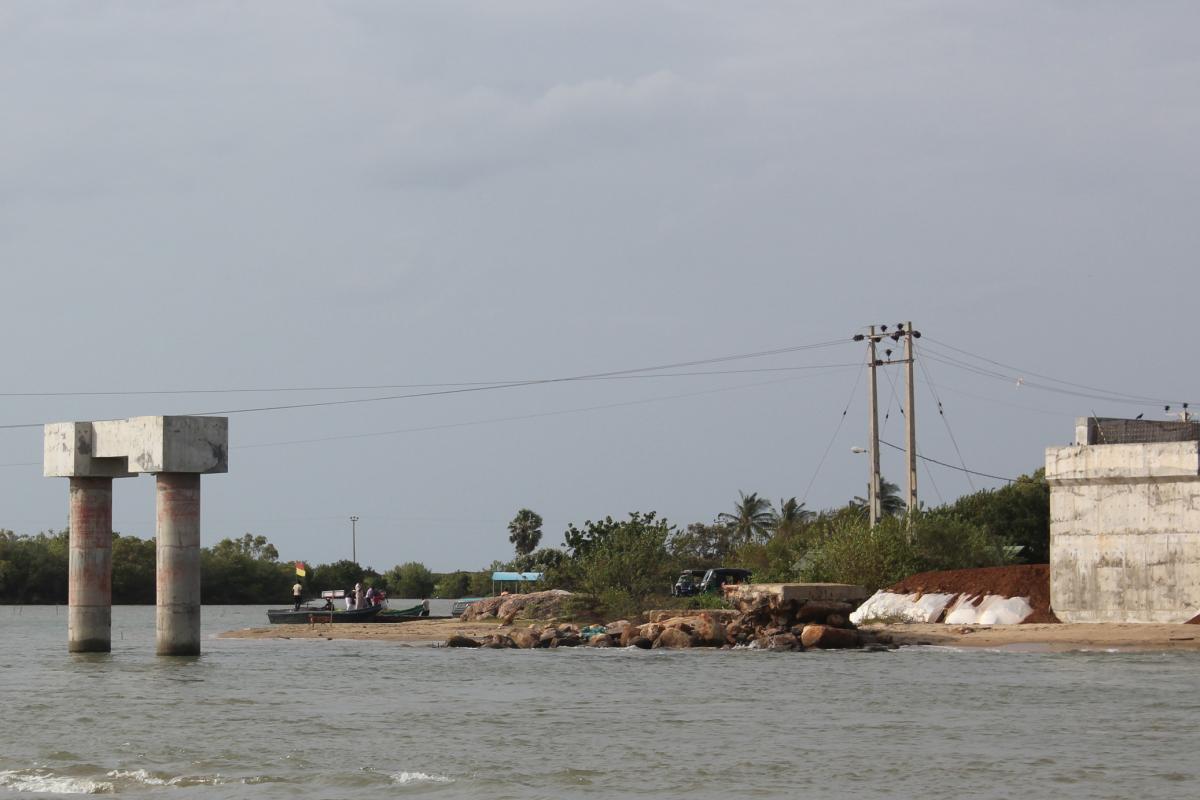 |
| Sinhala pilgrims line up before taking a boat across to the temple | |
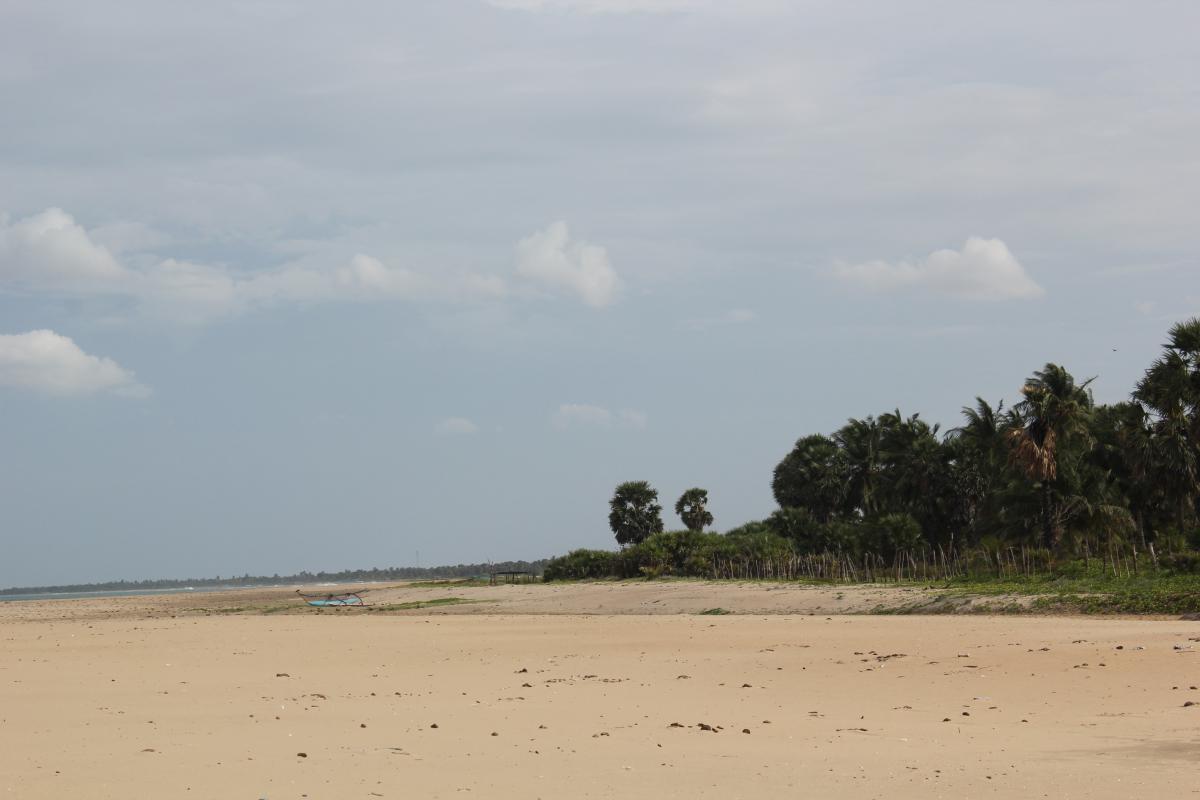 |
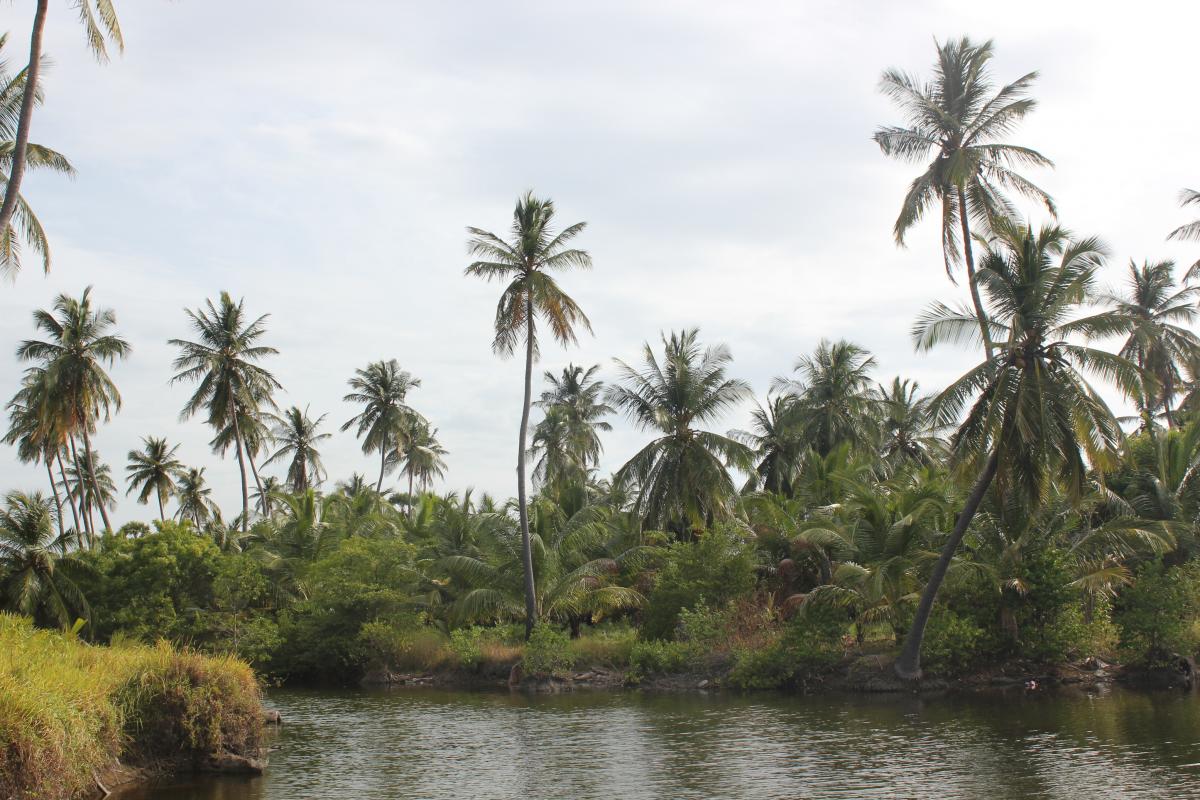 |
| Locals fear that the bridge will bring further investment from the south to develop the tourist infrastructure in the scenic area around the temple, catered to Sinhala travellers | |
Today “Lanka Patuna” has grown into a popular attraction for Sinhala Buddhists, with several full buses arriving every day. A road bridge is currently under construction to link the shores across the strait. Alongside the vehicles, a ferry service, operated by the Road Development Authority, is ferrying visitors to the Buddhist temple.
Sitting in the shade of a large tree across the shore from the temple, villagers discuss the shock of returning to find their temples destroyed. “What can we do now? They are solidifying their presence. Once the bridge is complete, there will be no going back,” said one local. His friend pointed out that military harassment, common in previous years had ceased, but that a return to their normal lives was difficult with the changes, despite having been resettled for nearly 9 years.
Another, smaller temple that was also destroyed opposite the rock, is currently being rebuilt. “When we demanded the return of the Muruguan Koyil, the authorities gave us back this one instead,” said the villager. “They told us to forget the other temple.”
Kallady
Only a few miles south of Ilankaithurai, in a place called Kallady, yet another Buddhist temple has been built on the site where a Hindu temple once stood. The location, also on a rock, though further inland, was used by the LTTE to place a communications tower. When the military took control of the region, they destroyed the existing Pillayar Koyil on the site. The government’s archaeological department designated the area as a historic Buddhist site, paving the way for the construction of a Buddhist complex, while maintaining a communications tower.
Speaking to locals outside the complex, they described how they found the statue of the Pillayar deity, lying discarded on the street when they returned. “It’s their government, they do what they want. We can’t do anything,” one woman remarked, while Buddhist chants blared from speakers at the temple.
A policeman stationed inside the complex, approached me while taking photos of the temple and asked who I was. He was from Tangalle he said, far in the south of the island and could not speak the Tamil language. When asked what was at the location previously, he said, “This has always been a Buddhist holy site”.
 |
| The newly constructed buildings at Kallady |
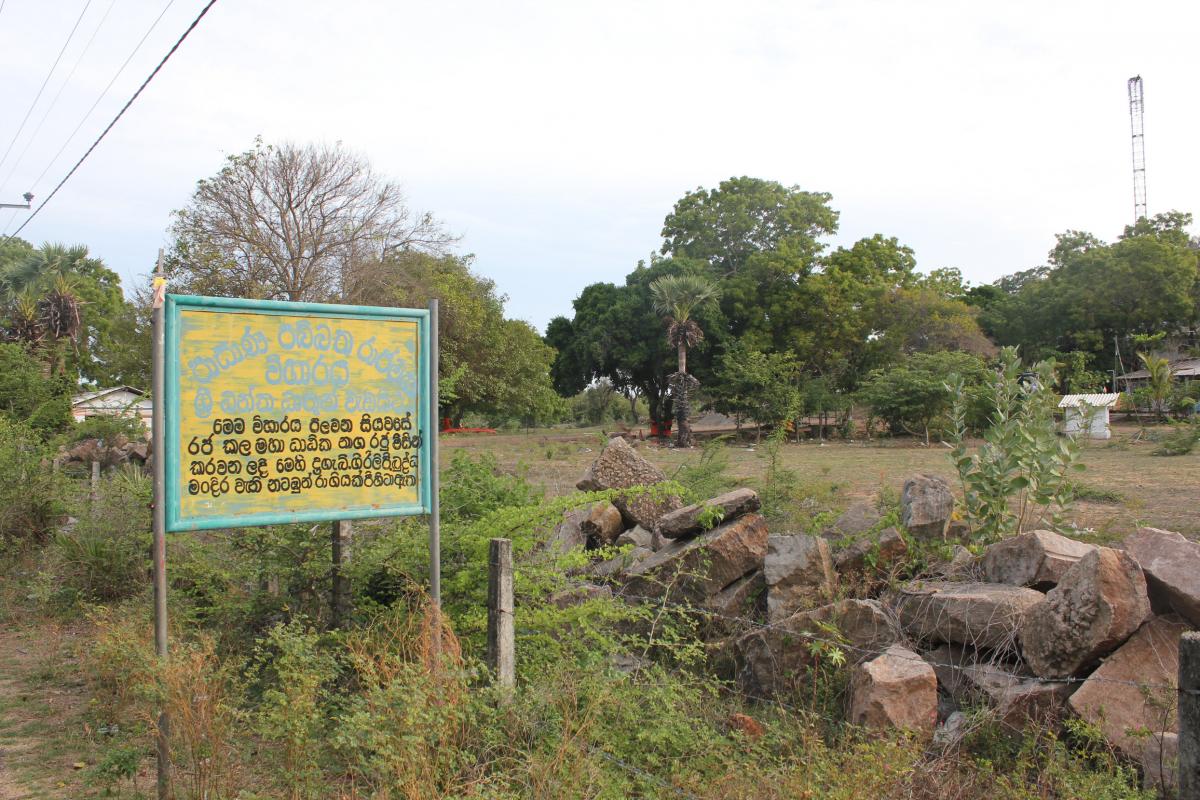 |
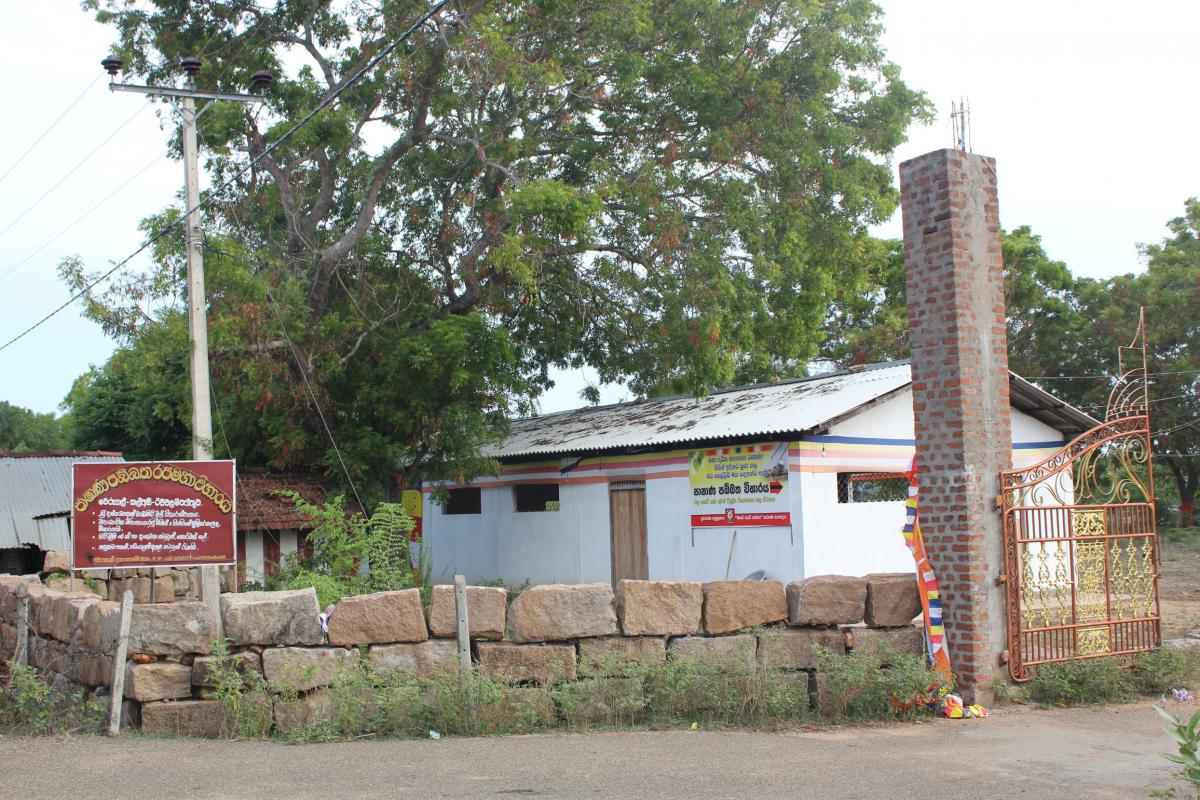 |
|
| Sinhala-only signs at the entrance to the site | ||
 |
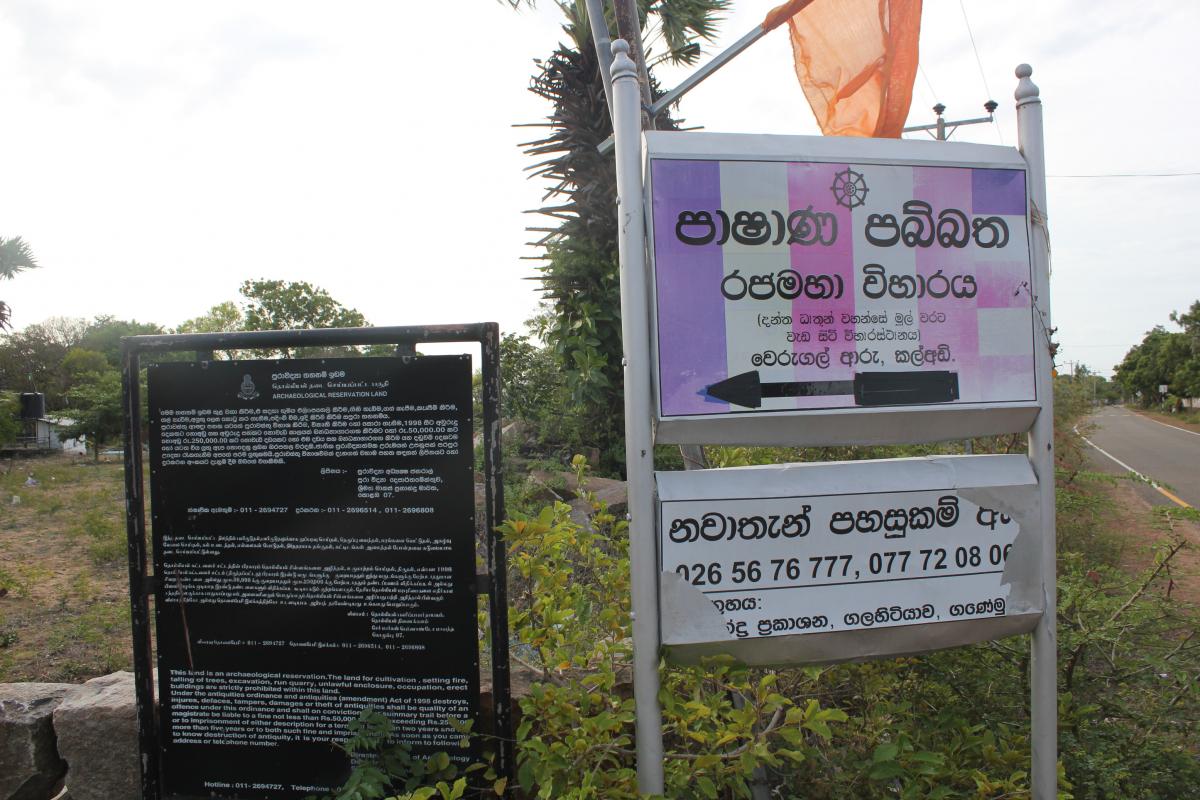 |
|
| Buddhist flags are tied across the site | Sri Lanka’s archeological department operates the area | |
Kinniya Hot Wells
The hot wells of Kinniya have been a pilgrimage site for centuries if not more. Previously the site of a Hindu temple, in a Tamil part of the district just south of Trincomalee town, it is now a Buddhist site, complete with a military camp on the land.
Kinniya itself now has a large Sinhala population, settled largely through government programmes. Entering the site of the hot wells, one walks past dozens of Sinhala stalls, with Sinhala only signs, before reaching an archway with a Buddhist flag planted on top of it. Signs from the archaeological department, explaining the Buddhist significance of the place, can be seen near the entrance. Visitors are both Tamil and Sinhalese, however the Tamil Hindu visitors are unable to conduct their rituals at the Sivan Koyil on the site. It is dilapidated and not in operation. Sinhala soldiers look over the pilgrims from their buildings, while the faithful bathe in the hot water of the springs.
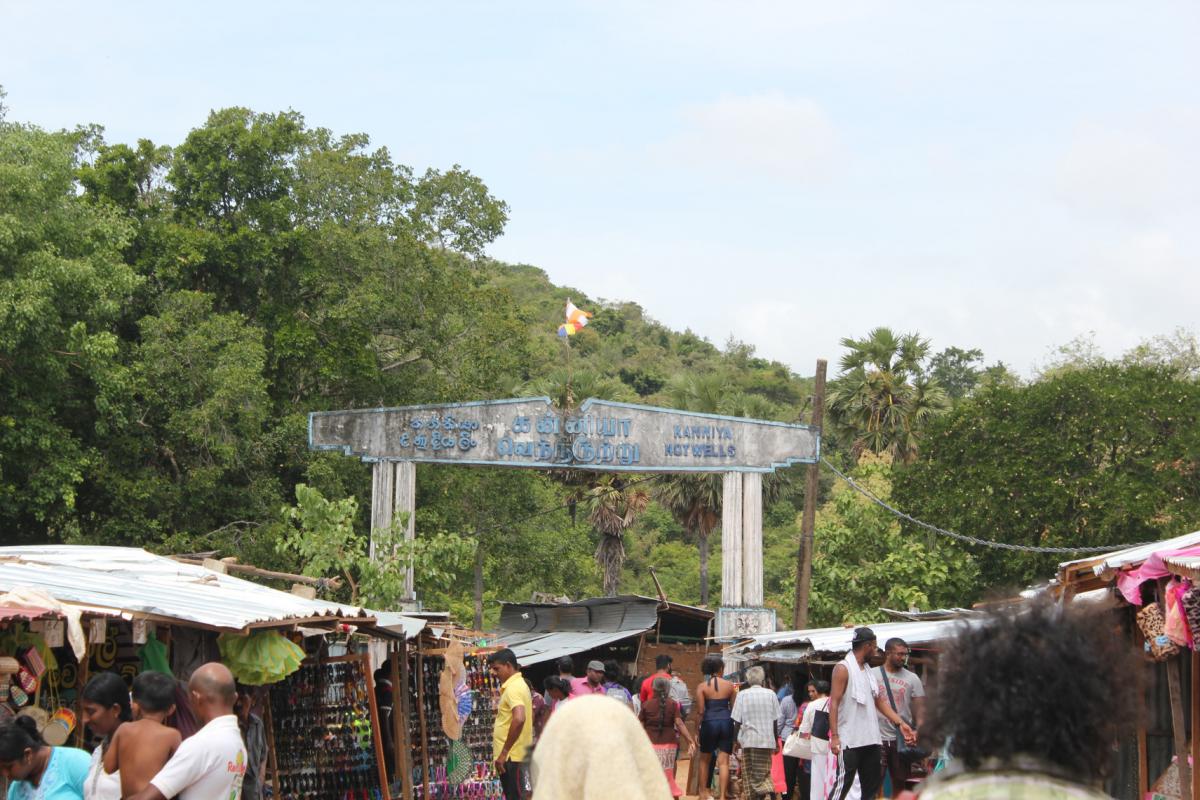 |
| A Buddhist flag flies on top of the entrance arch at the Kinniya Hot Wells |
Previously the wells and the Hindu temple were under the administration of the Trincomalee Madaththadi Muthtumaraiyamman Koayil, a Saiva temple in Trincomalee town, before it was taken over by the local administration.
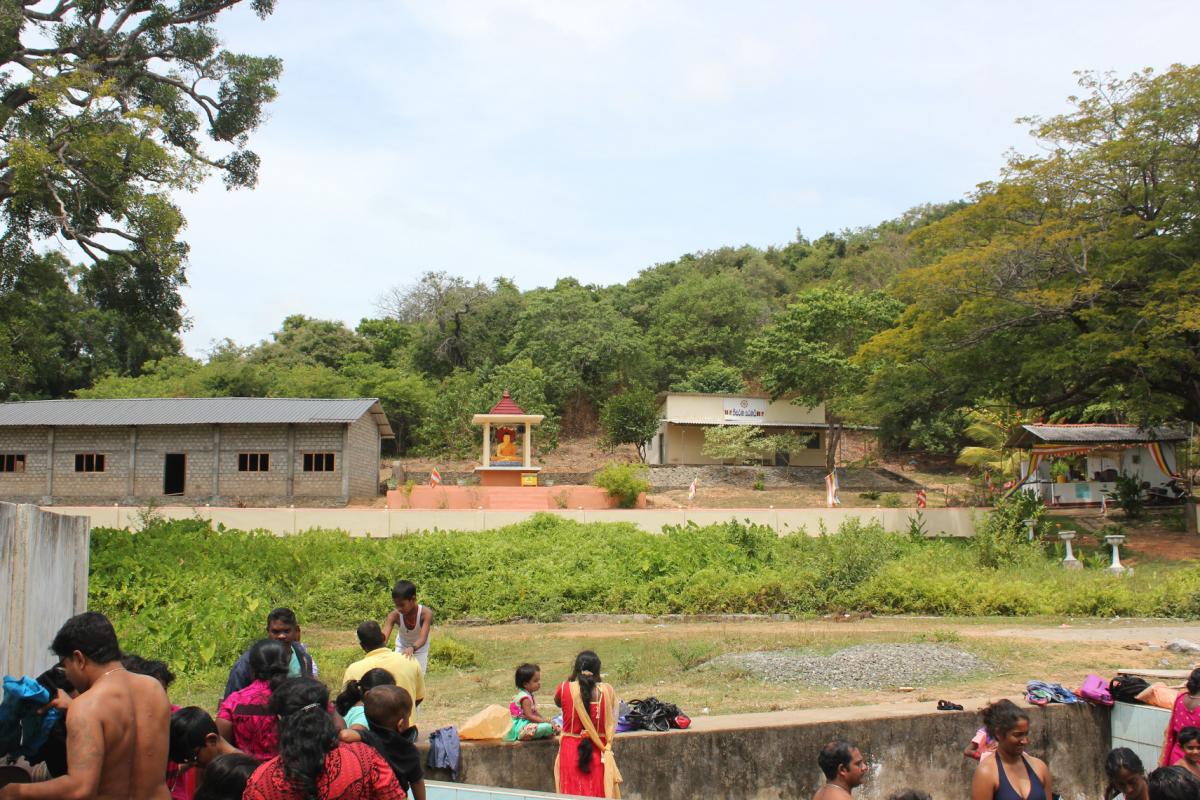 |
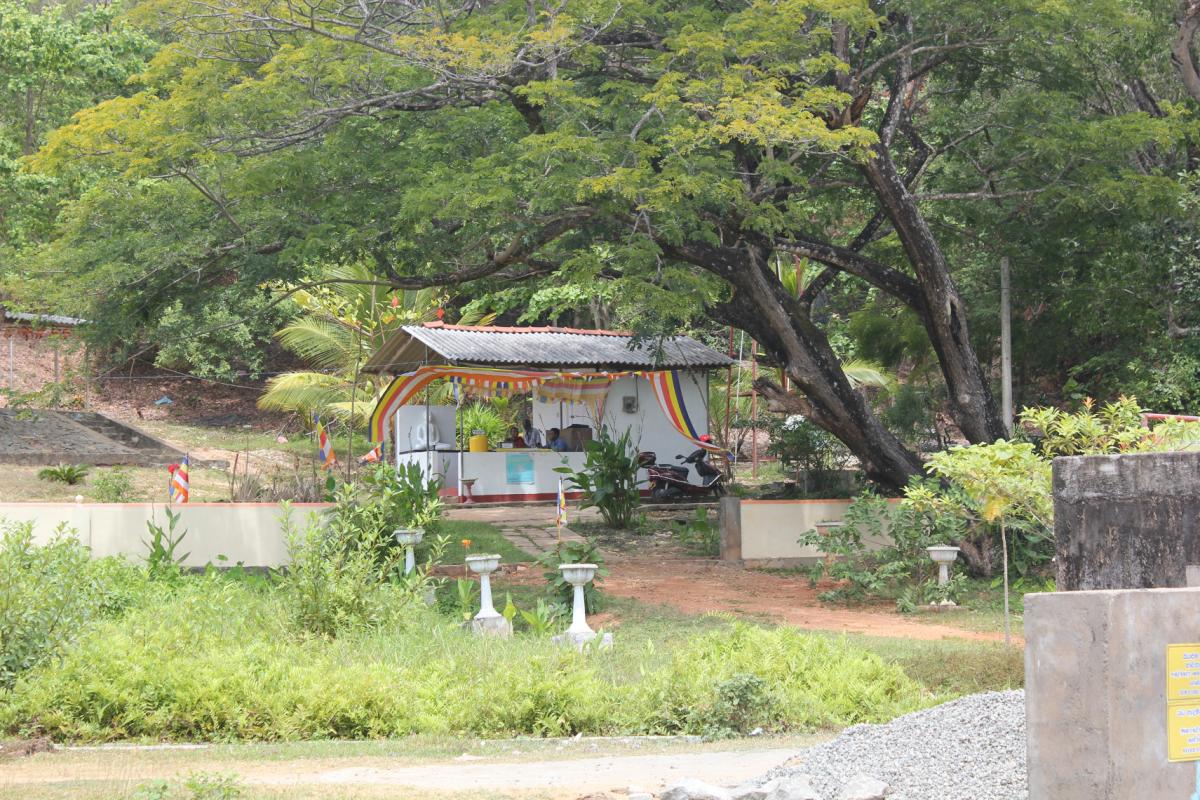 |
|
| A Buddha statue overlooks pilgrims and tourists | The structrures, draped in Buddhist flags, were constructed by the Sri Lankan military | |
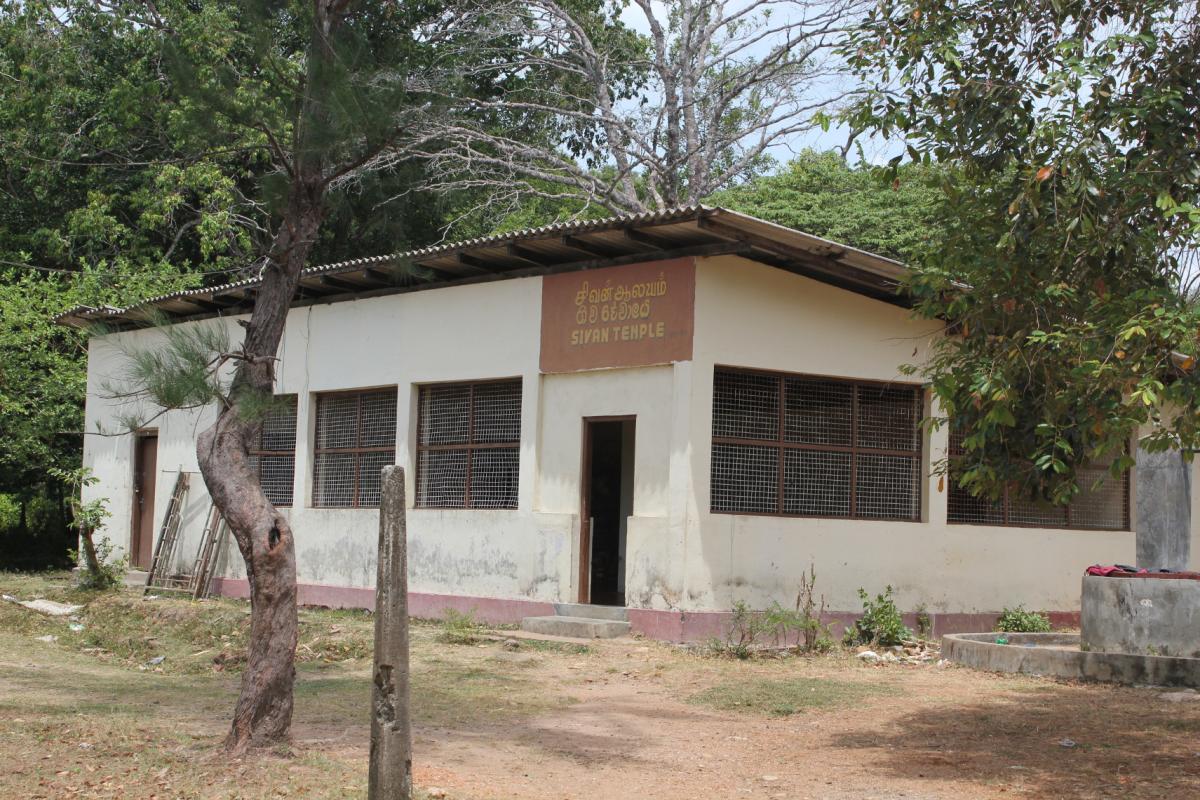 |
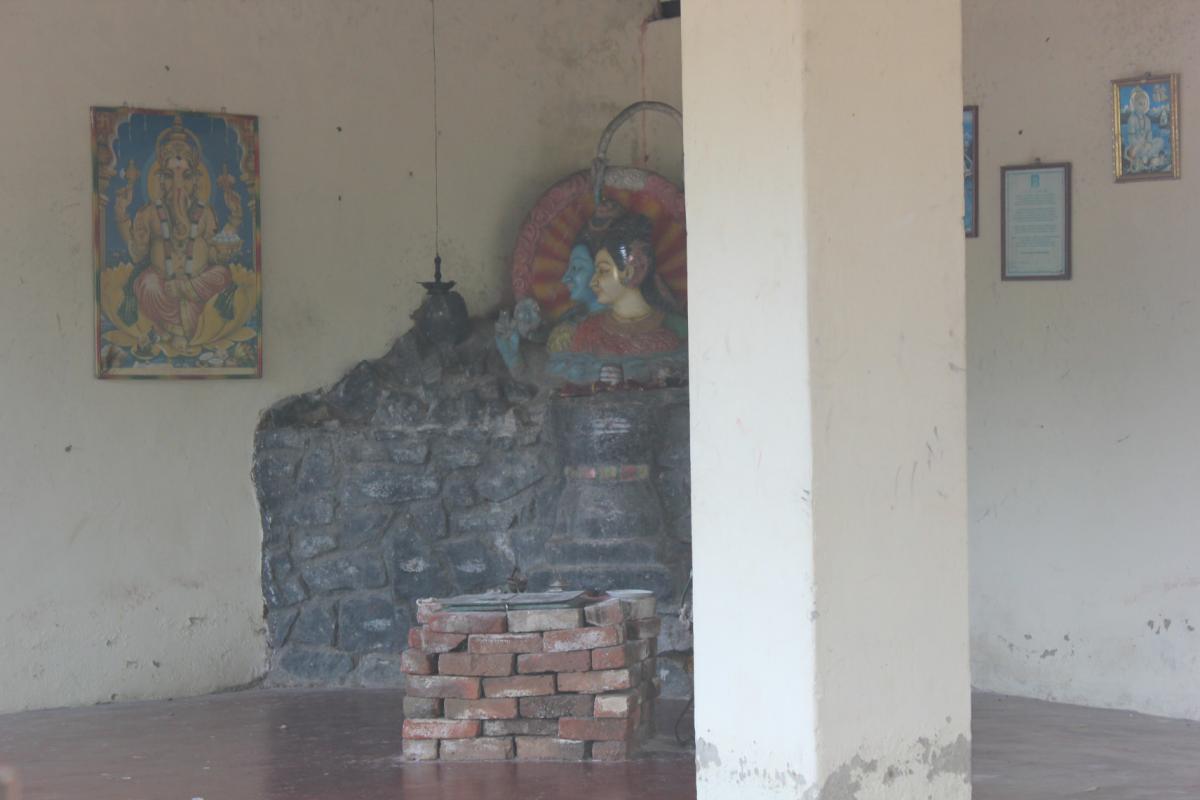 |
|
| The state of the dilapidated Sivan temple on the site | ||
In 2002 the Sinhala Government Agent for Trincomalee, ordered restoration work on the Saiva temple to be immediately halted, as Buddhist monks had claimed to have found bricks belonging to the Anuradhapuram period, an era of Buddhist rule. A new Government Agent, former military commander Major General (rtd) Ranjith de Silva, took control from the local administration and gave it to the archaeological department. An information board was removed as it gave “inaccurate” historical information.
Not far from the hot wells, a Tamil survivor of the final stages of the armed conflict, which saw tens of thousands massacred at Mullivaikkal, is running a small shop. Having lost a limb, he relies on his business for sustenance, receiving no support from the government. However, when asked whether pilgrims or tourists coming to visit the wells stop at his shop, he laughs. “They (the Sinhalese) have been given all the good spots near the springs. Hundreds visit every day, however my customers are mainly local Tamils on their way to tend to their fields and herds,” he says. There was a sense of bitter resignation in his voice, a tone I heard in all three locations. There’s no hope that the changes will be undone, however much the anger at the Sinhalisation continues to fester.
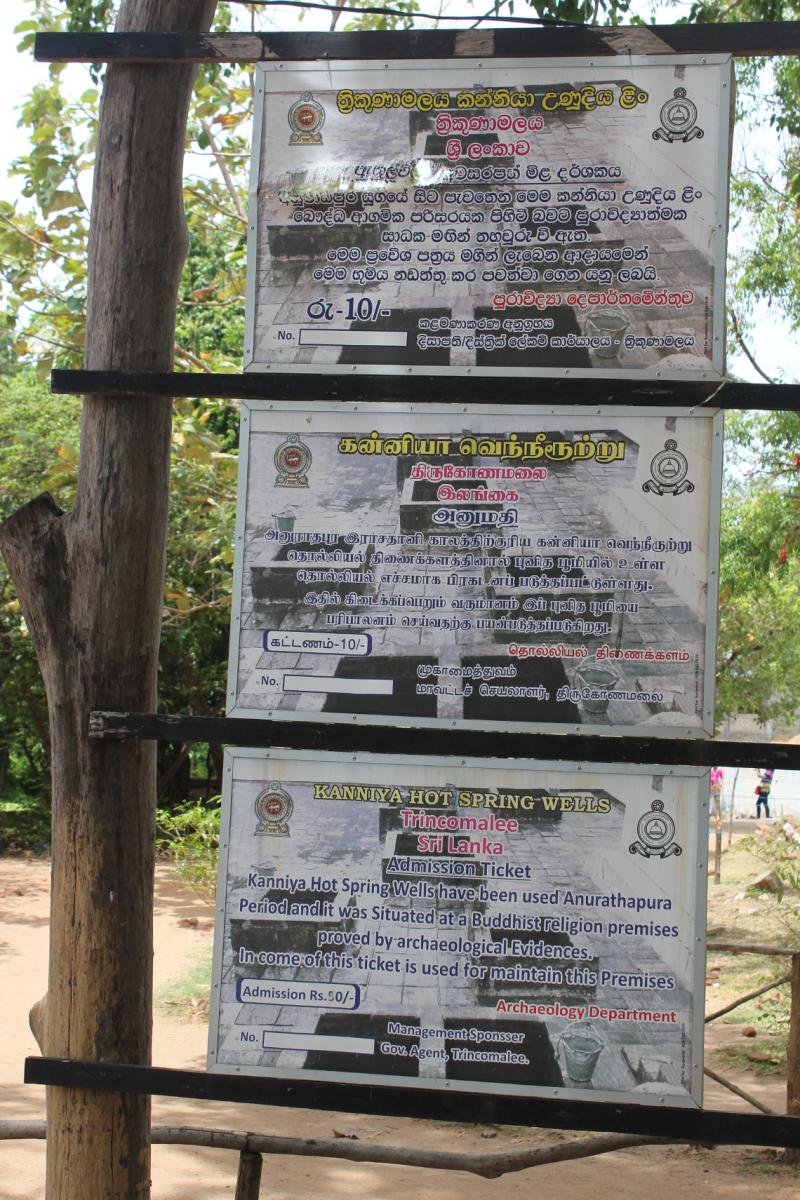 |
| The Sri Lankan Archeology Department controls this site too |
Seven years after the end of the armed conflict, and over a year and a half after the electoral defeat of former Sri Lankan President Mahinda Rajapaksa, the Sri Lankan state is continuing his and previous government’s policies of Sinhalisation and forced spread of Buddhism. Indeed, this is mandated by Sri Lanka’s constitution, which assures Buddhism’s “foremost place” and says its the state’s “duty to protect and foster” Buddhism. Tamils and minorities such as Muslims and Christians continue to face the brunt of this particularly toxic expression of Sinhala Buddhist chauvinism, emblematic of the nature of the state. While this continues, in addition to the rampant impunity for mass atrocities comitted during the armed conflict, resentment and anger will continue to grow. How the supposedly progressive sections of the Sirisena-government intend to tackle the issue of Sinhalisation, or whether they even recognise it as a core issue causing resentment across the North-East, remains to be seen. However without concerted efforts to address these symbols reiterating Sinhala Buddhist supremacy on Tamil, or previously Tamil land, attempts at reconciliation will remain futile.